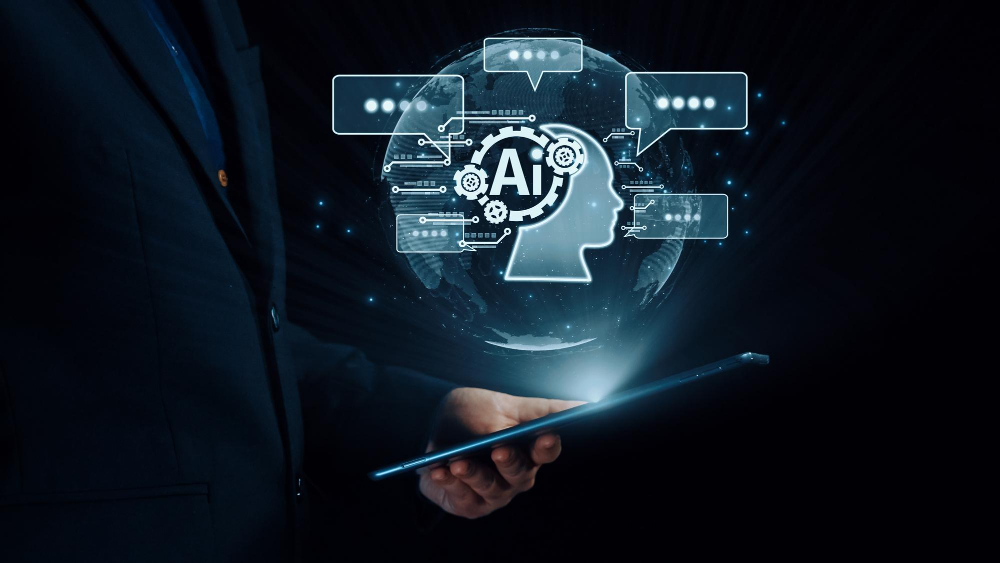AI-Augmented Creativity: How Artificial Intelligence is Transforming the Future of Art and Innovation
In today’s rapidly evolving digital landscape, artificial intelligence (AI) is no longer just a futuristic concept — it’s an active, transformative force driving change across industries. One of the most exciting frontiers of AI is its role in augmenting human creativity. Far from replacing artists, writers, musicians, and designers, AI is becoming a powerful collaborator, opening new horizons for creative expression and innovation.
In this blog, we’ll explore what AI-augmented creativity means, its benefits, challenges, and what the future holds for this fascinating synergy of human and machine intelligence.
What Is AI Augmentation? Understanding the Difference Between AI Augmentation and Automation
Before diving deeper, it’s important to understand AI augmentation versus automation. While automation replaces repetitive tasks with machines, AI augmentation enhances human capabilities, enabling people to do what they do best — imagine, innovate, and create — with powerful AI tools acting as extensions of their creative minds.
AI augmentation empowers creators by providing new tools for ideation, experimentation, and execution, resulting in faster workflows, new art forms, and broader access to creative technologies.
The Rise of AI-Augmented Creativity
Artificial intelligence has found fertile ground in creative fields. Here are some groundbreaking examples:
- Visual Arts: AI image generation tools like DALL·E, Midjourney, and Stable Diffusion allow artists to generate detailed artwork from simple text prompts, offering a new way to visualize concepts or create original pieces.
- Writing and Content Creation: Tools such as ChatGPT, Jasper, and Writesonic assist writers by generating drafts, brainstorming ideas, or even co-authoring stories, accelerating the writing process.
- Music Composition: Platforms like Amper Music, AIVA, and OpenAI’s Jukebox enable musicians and producers to compose music with AI’s help, from background scores to entire tracks.
By collaborating with AI, creators gain access to unprecedented creative freedom, rapidly prototyping ideas, and pushing beyond traditional limitations.
Benefits of AI-Augmented Creativity
Boosts Productivity and Efficiency
AI tools reduce the time spent on repetitive or technical tasks, allowing creators to focus on the core of their work — innovation and expression.
Expands Creative Possibilities
AI can generate ideas, variations, or combinations that humans might not have imagined, sparking novel directions and hybrid art forms.
Democratizes Creativity
Complex creative tools become accessible to amateurs and professionals alike, lowering barriers to entry and enabling diverse voices to participate in the creative ecosystem.
Enables Faster Iteration and Experimentation
Instant feedback and generation from AI systems allow creators to explore many versions quickly, honing ideas until they find the perfect fit.
Challenges and Ethical Considerations
While AI-augmented creativity offers tremendous opportunities, it also raises important questions:
Intellectual Property and Ownership
Who owns AI-generated art? How do copyrights apply when the creator is a human-AI collaboration? These legal questions remain under debate.
Authenticity and Originality
Critics question whether AI-generated works lack true originality or emotional depth. The balance between human touch and AI input continues to be explored.
Bias and Fairness
AI models learn from data that may carry cultural biases, which can reflect in the creative output. Responsible AI development and usage are crucial.
Job Displacement Concerns
While AI augments creativity, fears of displacement persist. The future likely involves new roles where humans and AI collaborate rather than compete.
The Future of AI-Augmented Creativity
The fusion of AI and creativity is just beginning. Emerging trends to watch include:
AI-Driven Storytelling
Interactive narratives and games powered by AI that adapt in real time to user choices.
Virtual Reality (VR) and Augmented Reality (AR) Integration
Immersive creative experiences blending AI, VR, and AR will redefine how art is made and experienced.
Personalized Content Creation
AI will tailor art, music, and writing to individual tastes, creating deeply personal creative experiences.
Collaborative AI Agents
Advanced AI collaborators that learn a creator’s style and preferences to co-create seamlessly.
Conclusion: Embrace AI as a Creative Partner
AI-augmented creativity is transforming the arts and innovation landscape. By viewing AI as a collaborator rather than a competitor, creators unlock new potential and expand the boundaries of human imagination.
The future belongs to those who harness AI’s power to enhance their creative expression — not just to work faster, but to dream bigger.
Bonus: Resources & Tools to Get Started
DALL·E 3 — AI-powered text-to-image generation by OpenAI
ChatGPT — AI writing assistant for brainstorming, drafting, and editing
Amper Music — AI music composition platform
RunwayML — Creative tools blending AI with video and design





